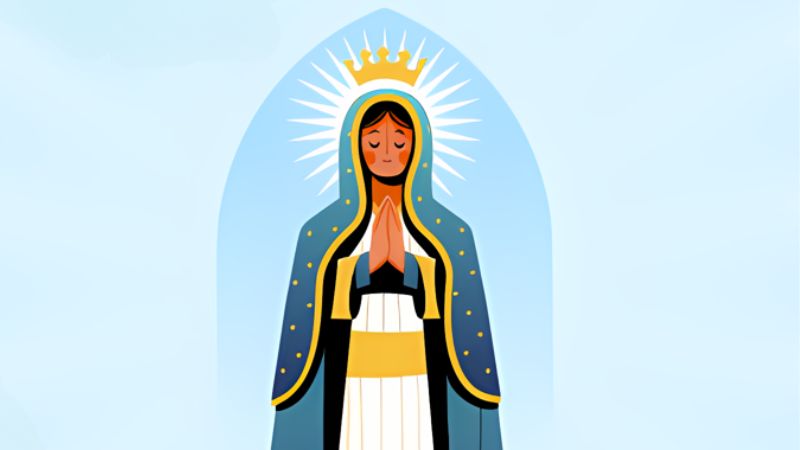The Magnificat, a prayer for all time

Simon Giarchi, who works for CAFOD in Plymouth Diocese, spoke to Catherine Gorman of our Theology team about the significance of the Magnificat.
As we approach the feast of the Assumption on 15 August, our mind is drawn once more to Our Lady and her most holy life, an example for us all. The feast of the Assumption is the festival where the Church remembers Our Lady being taken up to heaven.
So often when we think of Mary in our prayer life, it is the Hail Mary that comes instantly to mind. We learn this prayer as children and we sometimes engage in this prayer without even really thinking about it. It is a key part of our tradition.
Watch and pray the Hail Mary with our video in many languages.
But what did Mary herself pray? Her words are found in the Magnificat in Luke’s Gospel. There are not many places in the gospel, where we hear Mary’s own words. But here we hear her authentic voice and the power of the Holy Spirit rising within her. Mary gives thanks and rejoices in God. While doing so, her recognition of God’s love and justice bursts out of her, in this poetic and powerful prayer.
The Magnificat
“My soul glorifies the Lord,
my Spirit rejoices in God my Saviour.
He looks on his servant in her lowliness;
henceforth all generations will call me blessed.
The Almighty works marvels for me.
Holy is his name!
His mercy is from age to age,
on those who fear him.
He puts forth his arm in strength
and scatters the proudhearted.
He casts the mighty from their thrones
and raises the lowly.
He fills the starving with good things,
sends the rich away empty.
He protects Israel, his servant,
remembering his mercy,
the mercy promised to our fathers,
to Abraham and his sons for ever.” Luke 1:46-55
Mary’s prayer starts with the personal. She rejoices for all that God has done for her, but with the grace of the Holy Spirit, she moves from joy to her longing for a world of justice. In her song of praise, Mary reminds us all that God’s vision for the world is one that lifts up the poorest and most vulnerable to create a world where all can flourish. God’s love for us all turns the world order upside down. Those who are poor and lowly are raised up and those who are starving are fed.
The Magnificat highlights Mary’s great love for God, while celebrating her solidarity and love for those who are poor. Mary’s joy is not complete just in her own personal circumstances. It is not just the knowledge that she is favoured by God, or the promise of the Messiah to come. Mary’s Magnificat reminds us that true joy comes from a world where all people have what they need and no one uses their power to exploit others.
Explore more about the Magnificat with the children in your life.
Mary, our model
Mary is a model to us all of someone who unfailingly says yes to God. She exemplifies what it is to lead a Christian life and draws us to Jesus. She allows God to change her life, by agreeing to be the mother of Christ. But, in the Magnificat, she also leads us to explore how our faith is not a purely personal thing. If we listen to God and say yes to him, we can also play our part in working for a world transformed. A world of justice. A world where all can flourish.
The vision expressed by Mary in the Magnificat echoes throughout the gospels. From the beginning to the end of his ministry, Jesus comes to proclaim good news to the poor. Jesus reaches out to those on the margins. He feeds those who are hungry, heals those who are sick and questions the power and authority of those who set themselves up to exploit others. In Matthew 25, Jesus tells us how we will be judged, and it says in the Catechism, “It is by what they have done for the poor that Jesus Christ will recognise his chosen ones.” #2443
Mary’s Magnificat sums up the love of God and the love of neighbour which Jesus calls us to live out. It is an inspiration for the work of CAFOD and for those who are compelled by their faith to act together to build a better world.
Give to CAFOD today and help make a difference to people living in poverty.
This is wonderful and my husband is going to use it as a meditation for his committee at ACAT UK (Action by Christians Against Torture).
How we need the tender compassionate prayers of Our Holy Lady Mary now.